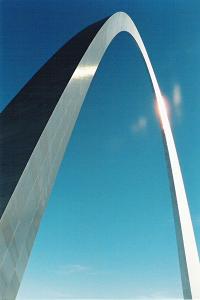Stainless steel - Simple English Wikipedia, the free encyclopedia

Stainless steel, also known as inox steel, is a steel alloy with a minimum of 10.5 or 11% chromium content by mass.[1][2]
Stainless steel does not stain, corrode, or rust as easily as ordinary steel, but it is not stain-proof.[3]
The term 'corrosion resistant steel' is used when the alloy has less than the 12% minimum of chromium, for example in the aviation industry. There are different grades and surface finishes of stainless steel, depending on where it will be used. Stainless steels have a higher resistance to oxidation (rust) and corrosion in many natural and man-made environments, Different stainless steels have different amounts of different metals in them, and they are good for different purposes. There are over 150 grades of stainless steel, of which fifteen are the most used.
The idea behind stainless steel was discovered in the first part of the 19th century, but it took about 80 years to develop a reliable industrial method. French, British and American inventors worked on this until a genuine stainless steel was produced. The invention of modern stainless steel can be dated to 1913, and it was done by Harry Brearley in Sheffield, Yorkshire.[4] A common use for stainless steel is cutlery (knives, forks, and spoons). Stainless steel cutlery was a big industry in the mid-20th century Sheffield. Stainless steel is also used in future space rockets, like Starship and Terran R.
References[change | change source]
- ↑ "The stainless steel family" (PDF). Archived from the original (PDF) on 2011-07-21. Retrieved 2009-11-12.
- ↑ "Steel glossary". American Iron and Steel Institute (AISI). Retrieved July 30, 2006.
- ↑ "Why is stainless steel stainless?". Archived from the original on 2009-01-26. Retrieved 2008-12-20..
- ↑ Evans, Stephen 2014. 10 inventions that owe their success to World War One. BBC News. [1]
Other websites[change | change source]
- Articles about stainless steel Archived 2009-01-06 at the Wayback Machine by International Stainless Steel Forum
- What is stainless steel Archived 2020-01-31 at the Wayback Machine by BSSA
- Euro Inox (multilingual portal)
- Comprehensive information about stainless steel by The Stainless Steel Information Center
- Comprehensive information about metallurgy of stainless steel by Cambridge University
- Life cycle costing of stainless steel Archived 2006-11-11 at the Wayback Machine
- Introduction to stainless steel by KOSA


 French
French Deutsch
Deutsch